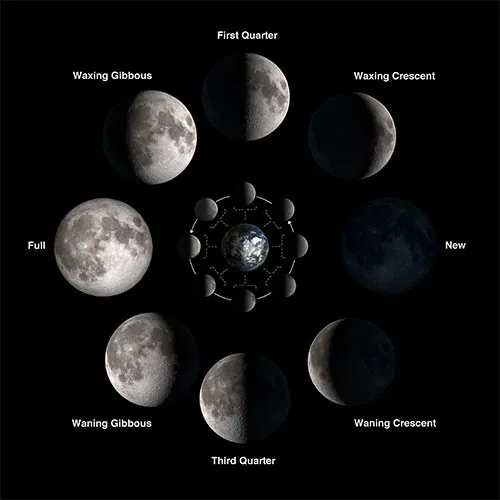After the Sun, the Moon is easily one of the most important celestial bodies to the human race. Since the ancient times, people have looked up and told stories about it, and even used it to track the passage of time.
Given how influential the Moon has been to us over the centuries, it's surprising that there are still many misconceptions about it. Luckily, we're here to answer all of your burning questions about the Moon.
Why does the Moon change shape?

The Moon goes through a series of phases each month, from the new Moon to the full Moon and back again. So why is it sometimes a full circle and sometimes only a crescent – or even not visible at all?
The Sun's light will only hit one half of the Moon at a time, giving it a day side and a night side – just like on Earth.
The shape that the Moon appears to us on Earth depends on where it is compared to the Sun. If it's directly between the Earth and the Sun, then the Sun's light only falls on the side we can't see, and so we get a new Moon: it appears completely dark in the sky. However, when the Moon is on the far side of the Earth from the Sun, its day side is facing us completely, and we see this as a full Moon.
After the Moon is new, more of its surface will become visible in the sky as it orbits the Earth: we call this 'waxing', and it first becomes a crescent. When it's half full, we call it the first quarter Moon, and when it's bigger than this but not yet full, we call it a gibbous Moon. After the full Moon, it slowly shrinks, which we call 'waning'. The Moon will move through waning gibbous, then third quarter, then waning crescent, and finally it will return to a new Moon.
Does the Moon rotate?
Yes, the Moon does indeed rotate on its axis, as well as orbiting the Earth. So why do we always see the same side of the Moon? Because the Moon is tidally locked to the Earth.
It takes the same amount of time for the Moon to orbit the Earth as it does for it to rotate once on its axis (compared to Earth that rotates on its axis once every 24 hours and completes an orbit of the Sun in 365 days). This means that one face will always be pointing towards Earth.
This video from NASA's Scientific Visualization Studio shows how it works.
What is the Moon made of?
Sorry to spoil your grand day out, Wallace, but it's not made of cheese. The Moon is made of rock, just like the Earth. Also like the Earth, it has a metallic core, a mantle and a crust.
The surface of the Moon is covered in a layer of rocky debris called the lunar regolith.
How big is the Moon?
The Moon has a radius of about 1,740km. That's roughly a quarter of the Earth's radius, meaning the Earth has almost 50 times the volume that the Moon does.
How many people have walked on the Moon?
Only 12 people – all of them men – have walked on the Moon. The last of these were Eugene Cernan and Harrison Schmitt, of Apollo 17.
However, in September 2020, NASA published its plan for the Artemis programme, which will aim to land the next man and the first woman on the Moon in 2024.
Read more about the Artemis programme:
- NASA Artemis program: Who will design next lunar lander?
- Dr Jacob Bleacher: Why do we need to go back to the Moon?
Who was the second man on the Moon?
The second man on the Moon was Buzz Aldrin. He was the Apollo 11 lunar module pilot, alongside mission commander Neil Armstrong (the first man on the Moon) and command module pilot Michael Collins.